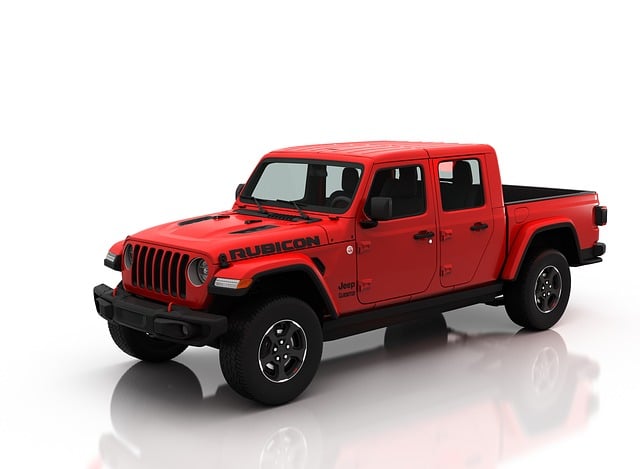Brownville fleet managers must choose appropriate brake pads for their trucks' bed rails, balancing durability, noise, and braking power with vehicle weight and unique braking systems. High-quality semi-metallic or organic pads, selected based on compatibility and performance needs, ensure safe stops, reduce wear, and prolong the lifespan of critical components like truck bed rails. Regular inspections every 10,000-15,000 miles are crucial to detect wear, prevent breakdowns, and maintain optimal braking efficiency for fleet safety and control under all conditions.
“Brownville fleet vehicles rely on effective braking systems, with brake pads playing a pivotal role. This comprehensive guide delves into the essential aspects of brake pads, catering specifically to the unique needs of Brownsville fleet truck bed rails. We explore their function, diverse types, and importance in ensuring safe and efficient operations. By understanding the considerations for selection and proper maintenance, fleet managers can optimize performance, extend pad life, and ultimately enhance safety for their Brownsville trucks.”
- Understanding Brake Pads: Function and Types for Brownsville Fleet Vehicles
- Choosing the Right Brake Pads: Considerations for Truck Bed Rails
- Maintenance and Replacement: Ensuring Optimal Performance in Your Brownsville Fleet Trucks
Understanding Brake Pads: Function and Types for Brownsville Fleet Vehicles

Brake pads play a crucial role in ensuring the safety of Brownsville fleet vehicles, especially truck bed rails. Their primary function is to convert kinetic energy into heat during braking, which brings the vehicle to a stop. This simple yet vital process involves a complex interplay between the brake pad, rotor, and caliper. Brake pads come in various types, each designed for specific performance needs. For instance, semi-metallic pads offer a balance between durability and reduced dust formation, making them ideal for heavy-duty applications like truck bed rails. On the other hand, organic pads are more suited to lighter vehicles as they produce less noise and heat, but may wear down faster under intense conditions.
Understanding the different types of brake pads is essential for fleet managers in Brownsville. Choosing the right pad type can enhance braking efficiency, reduce maintenance costs, and extend the lifespan of the vehicle’s braking system, including critical components like truck bed rails. Regular inspection and timely replacement of brake pads are also vital to maintain optimal performance and safety standards for all vehicles in the fleet.
Choosing the Right Brake Pads: Considerations for Truck Bed Rails

When selecting brake pads for trucks with bed rails, it’s crucial to consider specific factors to ensure optimal performance and safety. One key aspect is understanding the compatibility with your vehicle’s make and model, especially for Brownsville fleet owners. Different trucks may require pads designed for their unique braking systems and caliper configurations.
Additionally, truck bed rail setups present unique challenges due to the additional equipment’s weight and the need for consistent braking power. Look for brake pads that offer high-quality materials and robust stopping performance to handle the extra load without compromising safety. Choosing the right pads can enhance overall control, reduce wear on brakes, and contribute to a smoother, more efficient ride, especially during heavy-load transport in Brownsville fleet operations.
Maintenance and Replacement: Ensuring Optimal Performance in Your Brownsville Fleet Trucks

Regular maintenance and timely replacement of brake pads are essential for ensuring optimal performance in your Brownsville fleet trucks. Brake pads, situated between the calipers and rotor, play a crucial role in slowing down or stopping the vehicle. Over time, they wear out due to constant friction, leading to reduced braking efficiency. For fleet managers in Brownsville, regular checks can prevent unexpected breakdowns and enhance safety on the road. By inspecting brake pads for signs of wear, corrosion, or damage, you can predict when replacements are necessary.
To maintain your Brownsville fleet truck’s braking system, establish a schedule for pad inspection, typically every 10,000 to 15,000 miles or at each service interval. During these checks, look for wear indicators—a metal-on-metal grinding noise suggesting severe wear. Keep in mind that the brake bed rails of your trucks also contribute to overall braking performance. Properly maintained bed rails ensure consistent and effective braking power, making it easier to control your fleet vehicles, especially under heavy loads or during emergency stops.
Brake pads play a crucial role in ensuring the safety of Brownsville fleet trucks, especially when considering the unique demands of truck bed rails. By understanding the various types and their functions, along with proper maintenance practices, fleet managers can maximize the performance and longevity of their vehicles. When it comes to choosing the right brake pads for your Brownsville fleet, keeping specific truck bed rail considerations in mind will contribute to smoother operations and reduced downtime.



